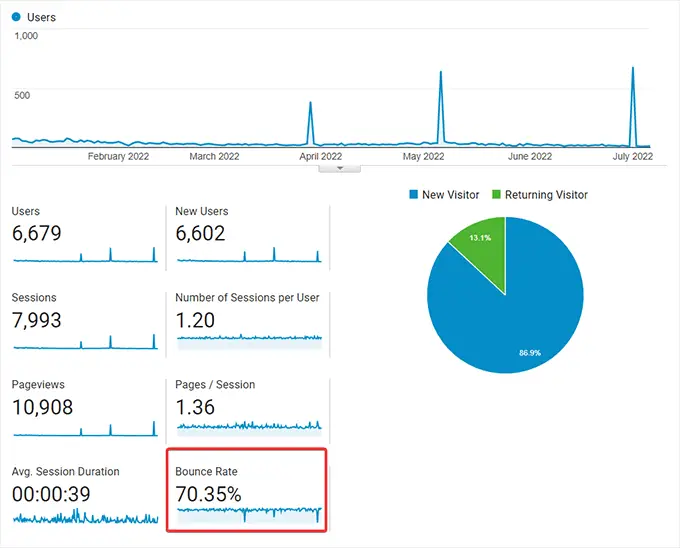Benefits of CDN in Reducing Bounce Rates and Improving User Retention

1. Reduced Page Load Time:

- A CDN caches content closer to users, reducing latency and significantly improving page load speeds.
- Faster loading times increase user satisfaction and reduce the chance of visitors bouncing off your website.
2. Enhanced Web Availability:

- CDNs distribute content across multiple servers, ensuring that your website is accessible even during peak traffic periods.
- High availability improves user experience and prevents customers from abandoning your site due to slow or unresponsive pages.
3. Improved Content Delivery:
- CDNs optimize content delivery based on user location, network conditions, and device type.
- Personalized content delivery ensures that users receive the best possible experience, regardless of their location or device.
4. Increased Bandwidth Capacity:
- CDNs increase your website’s bandwidth capacity by distributing traffic across multiple servers.
- This prevents overloading your server and decreases the likelihood of slowdowns or outages that can lead to high bounce rates.
5. Reduced Hosting Costs:
- CDNs can reduce hosting costs by offloading some of the traffic from your main server.
- This frees up resources on your server, allowing it to handle more critical tasks and improving overall performance.
6. Enhanced Security:
- CDNs provide security features such as DDoS protection and SSL encryption.
- These measures prevent malicious attacks and protect user data, increasing user confidence and reducing bounce rates.
7. Improved User Retention:
- By providing a consistently fast, reliable, and secure web experience, CDNs foster user loyalty.
- Satisfied users are more likely to return to your website, improving retention rates and overall business success.
Conclusion:
CDN implementation significantly reduces bounce rates and improves user retention by enhancing web performance, availability, content delivery, and security. By optimizing the user experience and providing a frictionless online environment, CDNs help businesses increase customer engagement, conversions, and revenue.## The Benefits Of CDN In Reducing Bounce Rates And Improving User Retention
Executive Summary
Content Delivery Networks (CDNs) are critical for businesses to improve website performance and enhance the user experience. By distributing cached content to users from geographically dispersed servers, CDNs reduce latency, improve page load times, and reduce bounce rates. This article delves into the profound benefits of CDN in reducing bounce rates and improving user retention, exploring crucial subtopics such as speed optimization, increased accessibility, enhanced security, SEO improvements, and cost-effectiveness. By leveraging CDN services, businesses can significantly elevate their website performance, engage users for longer durations, and drive overall growth and success.
Introduction
In the fast-paced digital world, website speed and performance are paramount to capturing and retaining users. A slow-loading website can lead to frustration, high bounce rates, and diminished user engagement. Content Delivery Networks (CDNs) emerge as a powerful solution to this challenge, offering a range of advantages that can significantly improve website performance and user retention. This article will comprehensively analyze the key benefits of CDN in reducing bounce rates and enhancing user retention, providing valuable insights and recommendations for businesses seeking to optimize their online presence.
FAQs
1. What are the primary benefits of using a CDN?
CDNs provide numerous advantages, including reduced latency, improved page load times, increased website accessibility, enhanced security, SEO improvements, and cost-effectiveness.
2. How does a CDN improve website speed?
CDNs cache static content such as images, CSS, and JavaScript files on multiple servers distributed across the globe. When a user requests a web page, the CDN delivers the cached content from the server closest to the user’s location, reducing latency and improving page load times.
3. How does a CDN reduce bounce rates?
By improving website speed and performance, CDNs reduce the likelihood of users abandoning a website due to slow loading times. Faster-loading websites provide a more seamless user experience, encouraging users to stay on the website and explore its content.
Subtopics
Speed Optimization
– Reduced Latency: CDNs distribute cached content to users from geographically dispersed servers, minimizing the distance data must travel. This reduced latency translates into faster page load times, enhancing the overall user experience.
– Improved Page Load Times: By caching static content and delivering it from nearby servers, CDNs significantly reduce page load times. Fast-loading websites are more likely to retain users and encourage them to engage with the content.
– Increased Accessibility: CDNs improve website accessibility by ensuring that content is available to users even during periods of high traffic or server outages. This enhanced accessibility reduces the risk of users encountering errors or delays, further reducing bounce rates.
Enhanced Security
– DDoS Mitigation: CDNs can protect websites from Distributed Denial of Service (DDoS) attacks by distributing traffic across multiple servers. This makes it more difficult for attackers to overwhelm the website with traffic, ensuring continued availability and preventing disruptions that could lead to high bounce rates.
– SSL/TLS Encryption: CDNs can provide SSL/TLS encryption, establishing a secure connection between the website and users’ browsers. This encryption safeguards sensitive user data, such as login credentials and payment information, instilling trust and reducing the risk of data breaches that could erode user retention.
– Malware Scanning: CDNs can scan content for malware and block malicious requests, protecting users from harmful software and viruses. This enhanced security reduces the likelihood of users encountering malware-infected websites, which can lead to security breaches and diminished trust.
SEO Improvements
– Improved Website Speed: Page load speed is a critical ranking factor for search engines. By utilizing a CDN to optimize website speed, businesses can improve their search engine rankings and increase organic traffic.
– Reduced Bounce Rates: Search engines consider bounce rates when determining website rankings. CDNs help reduce bounce rates by improving website speed and providing a seamless user experience, positively impacting search engine rankings.
– Enhanced User Engagement: Faster-loading websites encourage users to stay on the website longer, increasing the time spent on page and the number of pages viewed. This enhanced user engagement sends positive signals to search engines, further improving search engine rankings.
Cost-Effectiveness
– Reduced Bandwidth Costs: CDNs cache content on multiple servers, reducing the bandwidth usage for the origin server. This can lead to significant cost savings for businesses with high bandwidth requirements.
– Improved Server Performance: By distributing cached content to users, CDNs reduce the load on the origin server, improving its performance and reducing the need for costly upgrades.
– Scalability without Additional Infrastructure: CDNs provide scalability without the need for businesses to invest in additional infrastructure. This cost-effective solution allows businesses to handle increased traffic without compromising website performance or incurring significant capital expenditures.
Conclusion
Content Delivery Networks (CDNs) are indispensable for businesses seeking to optimize website performance and elevate the user experience. By reducing latency, improving page load times, increasing accessibility, enhancing security, driving SEO improvements, and offering cost-effectiveness, CDNs empower businesses to significantly reduce bounce rates and improve user retention. In today’s competitive digital landscape, leveraging CDN services is no longer an option but a necessity for businesses striving for success and sustainable growth. By embracing CDNs, businesses can transform their websites into fast-loading, engaging, and secure destinations that captivate users, drive conversions, and foster lasting relationships.
Keyword Tags
- CDN
- Bounce Rates
- User Retention
- Website Performance
- Content Delivery Network
